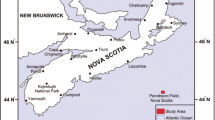Abstract
Logging facies analysis is a significant aspect of reservoir description. In particular, as a commonly used method for logging facies identification, Multi-Resolution Graph-based Clustering (MRGC) can perform depth analysis on multidimensional logging curves to predict logging facies. However, this method is very time-consuming and highly dependent on the initial parameters in the propagation process, which limits the practical application effect of the method. In this paper, an Adaptive Multi-Resolution Graph-based Clustering (AMRGC) is proposed, which is capable of both improving the efficiency of calculation process and achieving a stable propagation result. More specifically, the proposed method, 1) presents a light kernel representative index (LKRI) algorithm which is proved to need less calculation resource than those kernel selection methods in the literature by exclusively considering those “free attractor” points; 2) builds a Multi-Layer Perceptron (MLP) network with back propagation algorithm (BP) so as to avoid the uncertain results brought by uncertain parameter initializations which often happened by only using the K nearest neighbors (KNN) method. Compared with those clustering methods often used in image-based sedimentary phase analysis, such as Self Organizing Map (SOM), Dynamic Clustering (DYN) and Ascendant Hierarchical Clustering (AHC), etc., the AMRGC performs much better without the prior knowledge of data structure. Eventually, the experimental results illustrate that the proposed method also outperformed the original MRGC method on the task of clustering and propagation prediction, with a higher efficiency and stability.
Similar content being viewed by others
References
Abrar, B., 2011, Integration of log data analysis and facies core to define electrofacies using multi resolution graph-based clustering: Iranlan Journal of Chemistry & Chemical Engineering- International English Edition, 30(3), 1–7.
Diday, E., 1971, Une nouvelle méthode en classification automatique et reconnaissance des formes la méthode des nuées dynamiques: Revue de statistique appliquée, 19(2), 19–33.
Dodge, Y., and Commenges, D. 2006, The Oxford dictionary of statistical terms: Oxford University Press, England, 119–370.
Hastie, T., Tibshirani, R., & Friedman, J., 2009, The elements of statistical learning: data mining, inference, and prediction: Springer Science & Business Media. 467–468.
Hinton, G. E., Salakhutdinov, R. 2006, Reducing the dimensionality of data with neural networks: Science, 313(5786), 504–507.
Khoshbakht, F., Mohammadnia, M., 2010, Assessment of clustering methods for predicting permeability in a heterogeneous carbonate reservoir: Journal of Petroleum ence & Technology, 2(2), 50–57.
Kohonen, T., 1990, The self-organizing map: Proceedings of the IEEE, 78(9), 1464–1480.
Lance, G. N., and Williams, W. T., 1967, A general theory of classificatory sorting strategies Hierarchical systems: Computer Journal, 9(4), 373–380.
Lukasová, A., 1979, Hierarchical agglomerative clustering procedure: Pattern Recognition, 11(5–6), 365–381.
Mourot, G. 1993, Contribution au diagnostic des systèmes industriels par reconnaissance des formes (Doctoral dissertation): Doctorat del’Institut National Polytechnique de Lorraine, France.
Mourot, G., Bousghiri, S., and Ragot, J., 1993, Pattern recognition for diagnosis of technological systems: a review: International Conference on Systems IEEE, 275–281.
Nouri-Taleghani, M., Kadkhodaie-llkhchi, A., & Karimi-Khaledi, M., 2015, Determining hydraulic flow units using a hybrid neural network and multi-resolution graph-based clustering method case study from South Pars Gasfield, Iran: Journal of Petroleum Geology, 38(2), 177–191
Pabakhsh, M., Ahmadi, K. and Riahi, M. A., and et al., 2012, Prediction of PEF and LITH logs using MRGC approach: Life Science Journal, 9(4), 974–982.
Rogers, S. J., Fang, J. H., Karr, C. L., and et al., 1992, Determination of lithology from well logs using a neural network: AAPG Bulletin, 76(5), 731–739.
Rosenblatt, F., 1958, The perceptron: a probabilistic model for information storage and organization in the brain: Psychological Review, 65(6), 386.
Sutadiwirya, Y., Abrar, B., Henardi, D., and et al., 2008, Using MRGC (multi resolution graph-based clustering) method to integrate log data analysis and core facies to define electrofacies, in the Benua Field. In Central Sumatera Basin, Indonesia: International Gas Union Research Conference(IGRC), Paris. Currans Associates, Inc., 733–744.
Tang, H., Meddaugh, W. S., and Toomey, N., 2011, Using an artificial-neural-network method to predict carbonate well log facies successfully: SPE Reservoir Evaluation & Engineering, 14(01), 35–44.
Tian, Y., Xu, H. Zhang, X. Y., et al., 2016, Multiresolution graph-based clustering analysis for lithofacies identification from well log data: case study of intraplatform bank gas fields, Amu Darya Basin: Applied Geophysics, 13(4), 598–607.
Tian, Y., Zhang, X. Y., Zhu, G. W., et al., Controlling effects of paleogeomorphology on intraplatform shoal reservoirs distribution and gas reservoirs characteristics: Taking intraplatform shoal gasfields of the Amu Darya basin as examples: Natural Gas Geoscience, 27(2), 320–329.
Ye, S. J., and Rabiller, P., 2000, A new tool for electro-facies analysis: multi-resolution graph-based clustering: SPWLA 41st Annual Logging Symposium, Dallas, Texas, USA, Jun 4–7.
Zhu, X. J., and Ghahramani, Z. B., 2002, Learning from labeled and unlabeled data with label propagation: Carnegie Mellon University CALD tech report CMU-CALD-02-107.
Author information
Authors and Affiliations
Corresponding author
Additional information
This work was sponsored by the Science and Technology Project of CNPC (No. 2018D-5010-16 and 2019D- 3808)
Wu Hongliang, senior engineer, received a Ph.D in Earth exploration and information technology from Research Institute of Petroleum Exploration & Development in 2013. He is currently an enterprise expert of China Petroleum Exploration and Development Research Institute, devoted to the research on well logging processing and interpretation methods. Email: wuhongliang@petrochina.com.cn
Rights and permissions
About this article
Cite this article
Wu, H., Wang, C., Feng, Z. et al. Adaptive multi-resolution graph-based clustering algorithm for electrofacies analysis. Appl. Geophys. 17, 13–25 (2020). https://doi.org/10.1007/s11770-020-0806-x
Received:
Revised:
Published:
Issue Date:
DOI: https://doi.org/10.1007/s11770-020-0806-x




